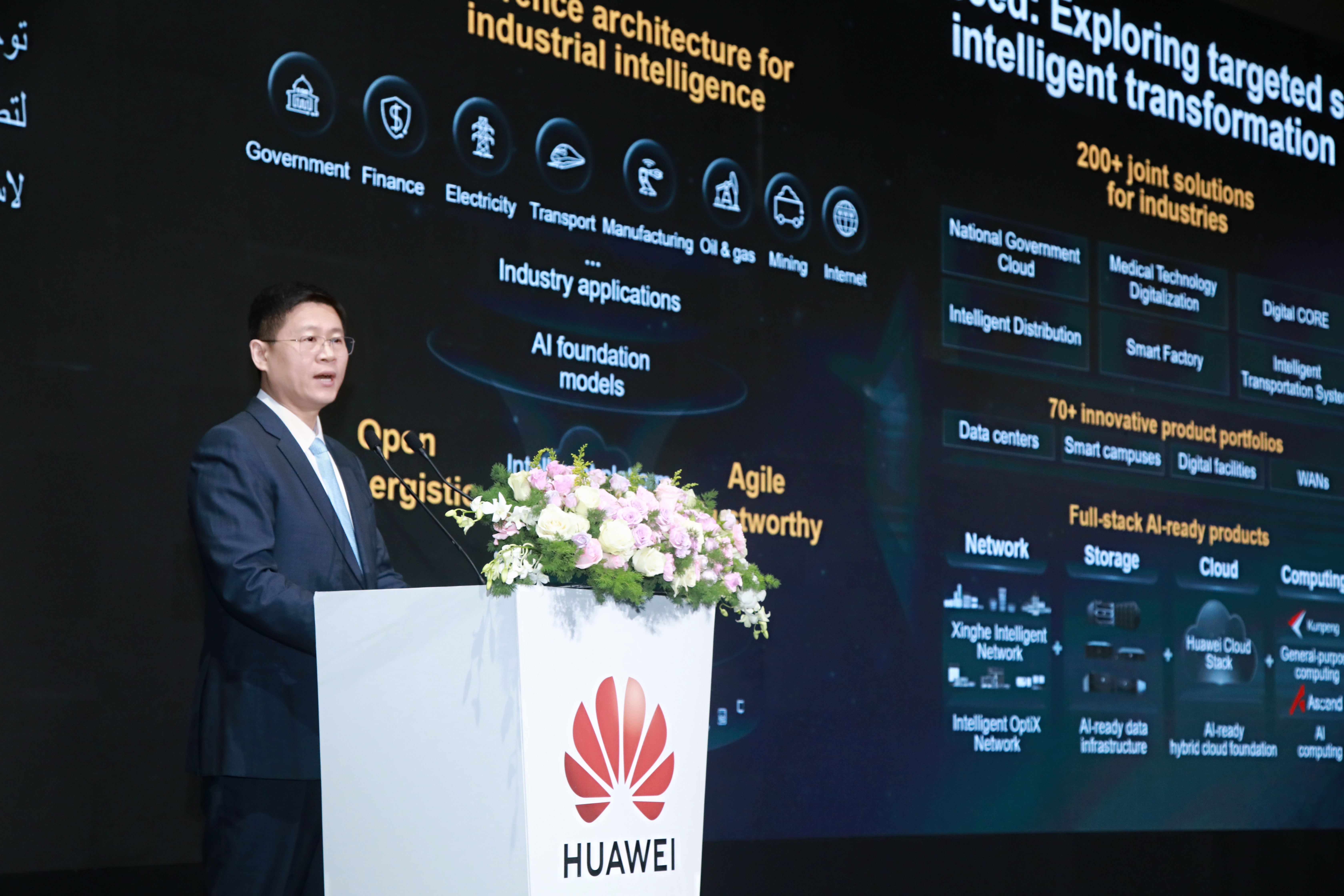Global digitalization index (GDI) in-depth analysis
As digital technologies reshape industries and redefine global economies, Huawei’s Global Digitalization Index (GDI) 2024 offers a detailed analysis of how nations can leverage ICT to accelerate growth

With technology permeating every facet of modern life, measuring digital progress is absolutely essential. Countries around the world are racing to implement digital infrastructure, recognizing their economic future depends on embracing the fast-paced age.
Huawei’s Global Digitalization Index (GDI) 2024 assesses the digital maturity of 77 nations, representing 93% of global GDP. Developed with IDC, the GDI measures digital transformation and offers a roadmap for development. It highlights that strategic investment in ICT is key to economic competitiveness.
The data speaks volumes: every dollar invested in digital transformation yields significant returns, especially in mature digital ecosystems. Huawei’s GDI provides insights for building robust digital foundations to thrive in a rapidly evolving landscape.
Digital maturity landscape: Frontrunners, adopters, and starters
The GDI 2024 categorizes nations into three clusters — Frontrunners, Adopters, and Starters — highlighting their digital maturity and associated challenges and opportunities.
Frontrunners like the US, China, and Singapore have established advanced digital ecosystems, with thriving AI applications, 5G networks, and cloud adoption. They enjoy high economic resilience, productivity, and innovation.
Adopters such as Spain and Malaysia are rapidly expanding their digital infrastructure, investing in data centers and cloud services. Their focus is on scaling and embedding these advancements to fully harness the benefits of digitalization.
Starters like Vietnam and Indonesia are laying the foundation for future growth, with significant strides in broadband rollout. Indonesia, for example, is now Southeast Asia’s largest e-commerce market, projected to exceed $210 billion by 2030.
However, the gap between these clusters is widening. From 2019 to 2023, Frontrunners increased digital infrastructure investments significantly, while Adopters and Starters lagged. This disparity may lead to diverging economic paths if these nations fail to keep pace.
For adopters and starters, targeted investments in digital infrastructure are essential to unlock future economic potential and close the gap with Frontrunners. The stakes are high, but with a strategic approach, these nations can accelerate their digital journey.
The digital dividend: ICT maturity fuels economic growth
The digital economy is no longer a distant concept or a buzzword. Indeed, now it is a tangible driver of global prosperity. Huawei’s GDI makes this abundantly clear. As the world navigates the Fourth Industrial Revolution, driven by advancements in AI, 5G-A, and cloud computing, the GDI provides an unprecedented level of insight into how these technologies are reshaping economies.
The link between digital maturity and economic growth is undeniable. Countries with robust digital ecosystems, such as the US, China, and Singapore, are reaping significant rewards from their investments in ICT. These frontrunners have seen their strategic focus on building digital infrastructure and enabling technologies translate into measurable economic benefits.
A one-point increase in a country’s GDI score can yield as much as $945 in additional GDP per capita for these digital leaders, according to Huawei.
For countries categorized as adopters and starters, the opportunity is clear. By accelerating their digital transformation efforts, they stand to unlock substantial economic gains. However, the GDI also highlights a growing gap: the disparity in digital infrastructure investment is widening between these clusters.
Frontrunners are investing heavily, leaving Adopters and Starters playing catch-up. The consequences of this imbalance are stark, with research showing that every dollar invested in digital transformation yields an $8.30 return for digitally mature economies.
Huawei’s GDI report sends a powerful message: the digital economy is a multiplier, and those who invest wisely will see outsized returns. But for those lagging, the risk of falling further adrift is real. The report's findings offer a clear roadmap for countries to bridge this gap—investing in digital infrastructure is no longer optional; it is an economic imperative.
Key pillars of the digital economy
Huawei’s Global Digitalization Index (GDI) 2024 identifies four core pillars of a successful digital economy: ubiquitous connectivity, strong digital foundations, green energy, and a supportive policy ecosystem.
These pillars are the drivers of economic growth:
Ubiquitous connectivity: Connectivity is essential for digital inclusion. Nations must prioritize stable, high-speed internet to drive their economies forward. Indonesia's investment in broadband has provided millions with internet access, boosting e-commerce and fostering 15 unicorn companies.
Digital foundations: Data centers, cloud services, and computing power are critical to economic growth. Mexico’s plan to establish 73 data centers by 2029 demonstrates how investing in digital infrastructure can stimulate growth and create thousands of jobs.
Green energy: Sustainable energy is crucial to powering the digital economy. China’s Port of Tianjin, transformed into a zero-carbon terminal, shows how combining green energy with digital technologies can enhance efficiency and sustainability.
Policy and ecosystem: A supportive policy environment and strong talent ecosystem are vital for digital growth. Governments must foster conditions for innovation, develop ICT talent, and provide the frameworks needed for nations to thrive in the digital economy.
The digital dividend effect: compounding economic growth
Huawei’s GDI highlights the digital dividend effect — exponential returns from incremental improvements in digital maturity. Countries with mature ecosystems extract far more value from digital investments than those at earlier stages.
For frontrunners, each one-point increase in GDI score adds $945 to GDP per capita, more than double the impact for Adopters and five times that for Starters. These nations have the infrastructure to seamlessly integrate AI, IoT, and cloud technologies, creating a cycle of innovation and productivity.
Adopters and starters can also benefit significantly from digital investments, especially in sectors like e-commerce and public services. Technologies like 5G enable IoT, real-time AI, and edge computing, driving economic gains across industries.
However, nations that fail to invest risk falling further behind, widening the gap between Frontrunners and the rest. For those willing to invest, the rewards are substantial, offering opportunities to leapfrog stages of development.
Building the future of the digital economy
Huawei’s GDI 2024 makes it clear: digital transformation is an imperative, not an option. Emerging technologies like quantum computing and advanced AI will amplify the digital dividend effect, making current investments in ICT critical for future prosperity.
Frontrunners must continue investing in technology and talent to maintain their lead, while Adopters and starters have a clear roadmap to close the gap. By building strong digital foundations, embracing renewable energy, and fostering supportive policies, these nations can drive sustainable economic growth.
The digital economy is a multiplier, and those who invest now will be rewarded. Huawei’s GDI provides the tools for nations to understand and accelerate their transformation. The time to invest in our digital future is now.
“The role of digital infrastructure in ensuring economic resilience cannot be overstated. The COVID-19 pandemic demonstrated how digitally mature nations were better equipped to adapt to disruptions, maintaining economic activity through remote work, online education, and digital services,” according to Huawei.
“The decisions we make today in investing in our digital future will determine the economic trajectories of nations for decades to come. The digital dividend effect shows us that in the race towards digital maturity, the stakes have never been higher — but neither have the potential rewards.”
For more details on the Global Digitalization Index (GDI), please click here to download the full report.
Sign up today and you will receive a free copy of our Future Focus 2025 report - the leading guidance on AI, cybersecurity and other IT challenges as per 700+ senior executives
ITPro is a global business technology website providing the latest news, analysis, and business insight for IT decision-makers. Whether it's cyber security, cloud computing, IT infrastructure, or business strategy, we aim to equip leaders with the data they need to make informed IT investments.
For regular updates delivered to your inbox and social feeds, be sure to sign up to our daily newsletter and follow on us LinkedIn and Twitter.
-
 Google drops $4.75bn on data center and energy firm Intersect
Google drops $4.75bn on data center and energy firm IntersectNews The investment marks the latest move from Google to boost its infrastructure sustainability credentials
-
 OpenAI says prompt injection attacks are a serious threat for AI browsers
OpenAI says prompt injection attacks are a serious threat for AI browsersNews OpenAI details efforts to protect ChatGPT Atlas against prompt injection attacks
-
 Using innovation to propel business success
Using innovation to propel business successHuawei has demonstrated an innovation-first approach to business for decades, across proprietary and open source technologies
-
 Huawei’s Peter Zhou on the future of data storage to accelerate business digital transformation
Huawei’s Peter Zhou on the future of data storage to accelerate business digital transformationSponsored Content Storage in the era of AI will create new challenges for cold and warm data
-
 Doing business under US sanctions: a Huawei success story
Doing business under US sanctions: a Huawei success storyAnalysis Doubling down on R&D, diversifying its business, and seeking out ripe new markets – the resurgence of Huawei carries lessons for all businesses
-
 Do we really need smart buildings anymore in a hybrid world of work?
Do we really need smart buildings anymore in a hybrid world of work?Supported Content Most workers prefer a hybrid work arrangement, with offices feeling emptier than ever – but that doesn't mean you should give up on modernizing the workspace
-
 Huawei empowers SMEs through digital and intelligent transformation
Huawei empowers SMEs through digital and intelligent transformationSponsored Content Huawei launches new solutions and strengthens partnerships to drive digital transformation for SMEs, aiming to empower small businesses in the intelligent era
-
 Reshaping traditional industries with technology
Reshaping traditional industries with technologySponsored Content Industries worldwide are on the brink of a new era as technologies like AI, 5G-A, and cloud computing reshape the landscape
-
 Driving intelligent transformation: Huawei's vision for the future at Gitex Global 2024
Driving intelligent transformation: Huawei's vision for the future at Gitex Global 2024Sponsored Content Li Peng, corporate senior vice president and president of ICT sales and service at Huawei, outlines how the company is leading the way in intelligent transformation, building partnerships, and developing talent to drive global growth in the intelligent era
-
 Striding towards the intelligent world
Striding towards the intelligent worldSponsored Content As global industries rapidly shift gears from digitalization to digital-intelligent transformation, data storage emerges as the critical driver of this evolution

